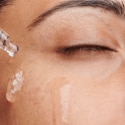Keep reading to know...
In a world obsessed with productivity, where "hustle culture" is glorified and overworking is often seen as a badge of honour, a new trend has emerged to push back against this relentless grind—bedrotting. What started as a term for staying in bed all day with minimal activity has become a viral phenomenon, thanks to social media platforms like TikTok. But is bedrotting a healthy response to burnout, or merely a short-term escape?
The Rise of Hustle Culture and Its Impact on Burnout
The 21st century has seen the rise of hustle culture, where the expectation is to work harder, faster, and longer than ever before. Social media, entrepreneurship, and the growing gig economy have all contributed to this culture. The result? A burnout epidemic affects young professionals, creatives, and anyone who feels the need to prove their worth through output constantly.
Burnout, a term coined to describe physical and emotional exhaustion from prolonged stress, is now more common than ever. The pressure to succeed, coupled with the demands of modern life, has left many people searching for ways to cope. Bedrotting, with its promise of doing absolutely nothing, seems like the ultimate antidote to the relentless grind.
"The constant pressure to 'do more' and 'achieve more' has contributed significantly to burnout, leading many to question the sustainability of such a fast-paced lifestyle," explains Dr Aarti Sharma, a clinical psychologist. "Bedrotting, by contrast, seems like a quiet rebellion against the relentless grind."
How Social Media Popularized Bedrotting
In the age of TikTok, Instagram, and YouTube, trends can spread like wildfire, and bedrotting is no exception. What might have once been seen as sheer laziness has been reframed as a form of self-care. TikTok users now proudly post videos of their bedrotting sessions, lounging under blankets with snacks, laptops, and endless Netflix queues. This content often features captions like "just doing nothing today" or "taking care of myself."
Social media platforms have been instrumental in turning bedrotting into a viral sensation, with users sharing snippets of their 'lazy days' as part of a broader self-care movement, where taking time to do nothing is celebrated.
The visual representation of these bedrotting days—cosy blankets, dim lights, and peaceful surroundings—has created a sense of aspirational self-care. For some, bedrotting has become a way to signal that it’s okay to take time off, especially in a world that never seems to slow down. However, critics argue that social media can also glamorise behaviours that may not be healthy in the long run.
Bedrotting and the Self-Care Movement: Does It Fit?
The modern self-care movement emphasizes mindfulness, wellness, and setting boundaries to protect one’s mental health. At first glance, bedrotting seems to fit perfectly within this framework. Rest is crucial for recovery, and taking a break from the relentless pressures of work can be necessary for rejuvenation.
However, while self-care practices like meditation, yoga, and even taking mental health days aim to restore balance, bedrotting’s effectiveness is questionable. While a day in bed can certainly help someone recover from fatigue, spending too much time in bed might have the opposite effect.
As part of the ever-growing self-care industry, bedrotting appears to be a new form of reclaiming personal time, but is staying in bed a healthy form of self-care, or is it more of a retreat from the pressures that feel too overwhelming to face?"
Is Bedrotting a Generational Response to Societal Pressures?
Generational differences in how we view work-life balance, productivity, and rest are key to understanding the rise of bedrotting. For Gen Z and Millennials, who are navigating a volatile job market, skyrocketing costs of living, and the unpredictability of the gig economy, traditional forms of rest may only sometimes be feasible. Unlike older generations who may opt for vacations or time off, younger people are turning to bedrotting as a more accessible and immediate form of escape.
For many young people, bedrotting is more than a break—it's a response to societal expectations. Unlike older generations, who might take holidays or structured time off, this cohort uses the comfort of their bed as a shield from external pressures.
This phenomenon reflects a broader generational pushback against the toxic elements of hustle culture. Young people are redefining success and rest on their terms. However, whether bedrotting is a healthy long-term solution is still up for debate.
The Psychological and Physical Impact: Temporary Fix or Healthy Reset?
So, is bedrotting good for you? In small doses, rest is essential for both mental and physical recovery. Spending a day or two in bed after a particularly stressful period could be a way to reset the body and mind. However, experts warn that prolonged bedrotting may exacerbate issues like anxiety and depression.
While a day spent bedrotting can offer short-term relief, experts caution that it may not address the root causes of burnout. Prolonged periods of inactivity could lead to issues like increased anxiety or muscle stiffness, but for some, it offers a critical reset.
Physically, staying in bed for too long can lead to reduced muscle tone, stiffness, and even disrupted sleep patterns. Mentally, while bedrotting can serve as a break from stress, it may also serve as an avoidance mechanism that delays dealing with the actual sources of burnout.
A Symptom of Burnout or a Solution?
So, is bedrotting the cure for burnout or just another symptom of an overwhelmed generation? The answer may lie somewhere in between. In moderation, bedrotting can provide much-needed rest and mental relief. However, it’s important to recognize that true recovery from burnout requires addressing its underlying causes—whether that’s overwork, lack of support, or unrealistic expectations.
As burnout continues to rise, perhaps the key is not to abandon bedrotting entirely but to balance it with proactive self-care practices that foster long-term well-being. So, the next time you feel the urge to rot in bed, remember: that rest is important, but real recovery comes from action, too.
In the end, bedrotting might be a temporary pause in the hustle, but it's not the complete answer to the burnout problem. It’s how we choose to move forward after that rest that matters.











 BePicks
BePicks







 Privacy Notice
Privacy Notice